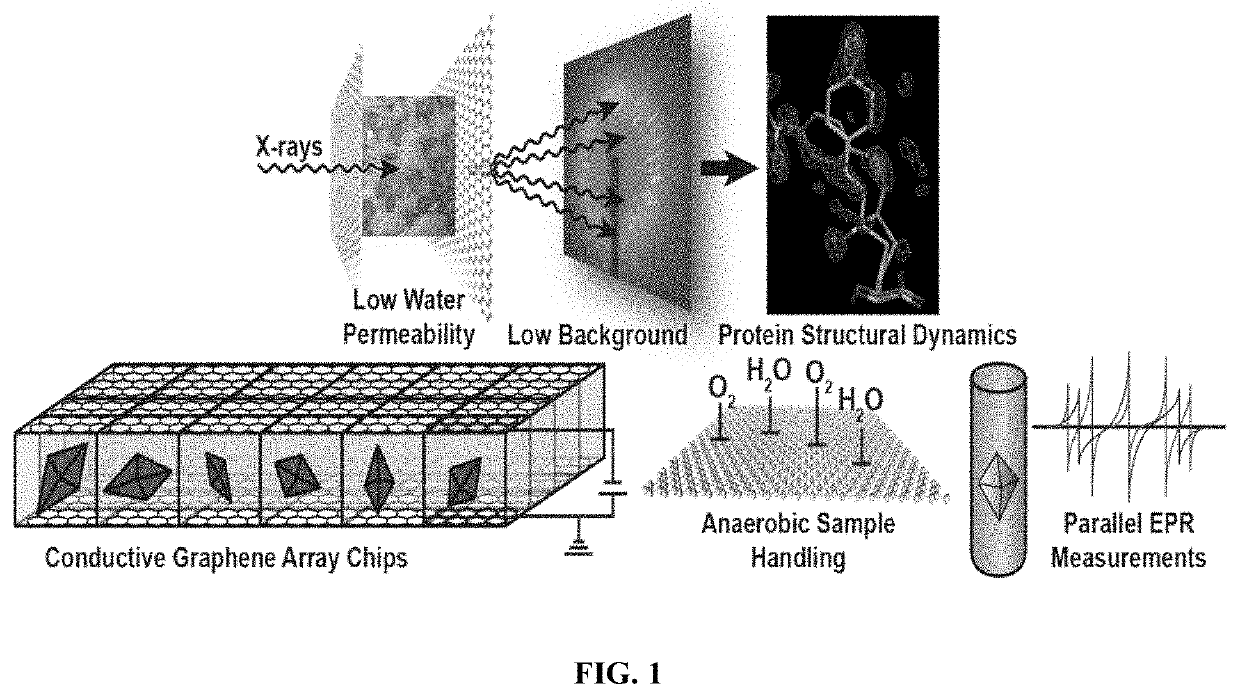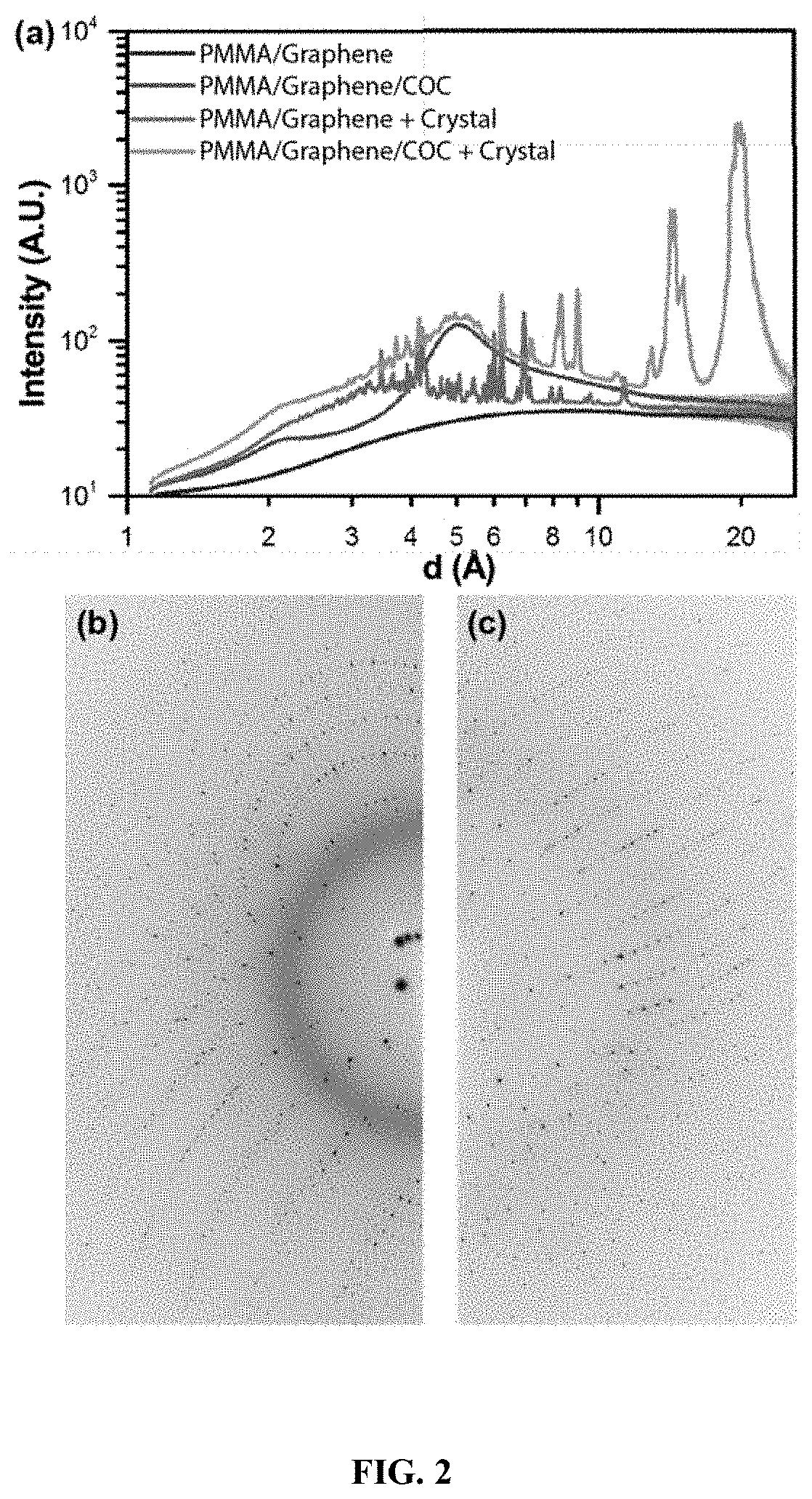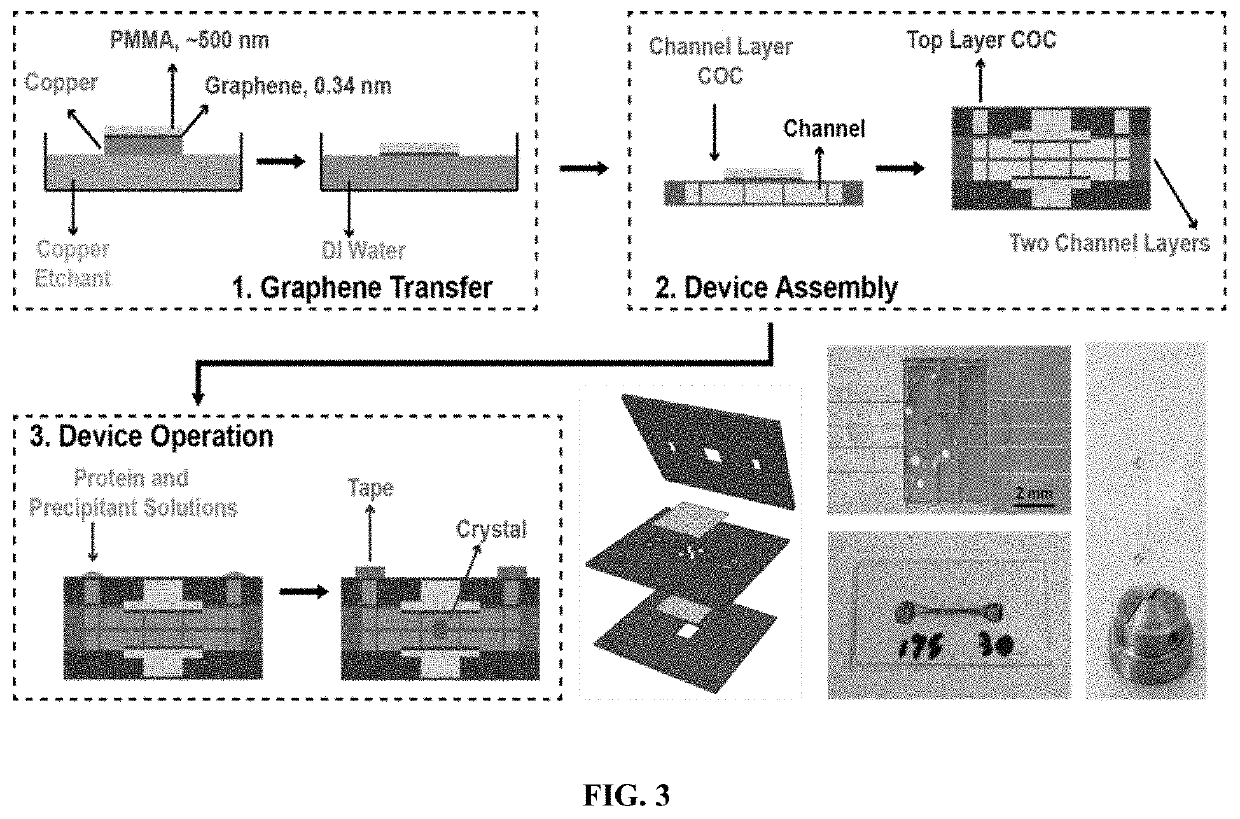Graphene-based electro-microfluidic devices and methods for protein structural analysis
a technology of microfluidic devices and graphene, which is applied in the field of microfluidic devices and xray analysis, can solve the problems of large-scale serial methods, large number of high-quality crystals to grow and manipulate, and problems that are then further compounded, so as to achieve faster nucleation and crystal growth, and higher signal-to-noise
- Summary
- Abstract
- Description
- Claims
- Application Information
AI Technical Summary
Benefits of technology
Problems solved by technology
Method used
Image
Examples
examples
Graphene Film Preparation
[0080]Large area graphene was synthesized on a copper substrate (Graphene Platform) by chemical vapor deposition in a quartz tube furnace (Planar Tech) using standard methods [48-51]. After synthesis, the back side of the copper substrate was scrubbed with a Kimwipe to remove residual graphene. Patterning of the graphene electrodes was achieved using two different methods. The first method simply used thin-tip tweezers (TDI International Inc.) to scratch a narrow line into the graphene / copper film. The second method defined the desired structure of the electrodes using a protective mask made from a piece of thermal release tape (Semiconductor Equipment Corp.) cut to the desired shape using a cutting plotter (Graphtech CE6000), followed by a 5-minute etching of the exposed graphene by an oxygen plasma (Harrick Plasma). Following patterning of the graphene electrodes, a roughly 500-nm thick layer of poly(methylmethacrylate) (950PMMA A4, Microchem) was then spi...
PUM
| Property | Measurement | Unit |
|---|---|---|
| Thickness | aaaaa | aaaaa |
| Thickness | aaaaa | aaaaa |
| Volume | aaaaa | aaaaa |
Abstract
Description
Claims
Application Information
 Login to View More
Login to View More - R&D
- Intellectual Property
- Life Sciences
- Materials
- Tech Scout
- Unparalleled Data Quality
- Higher Quality Content
- 60% Fewer Hallucinations
Browse by: Latest US Patents, China's latest patents, Technical Efficacy Thesaurus, Application Domain, Technology Topic, Popular Technical Reports.
© 2025 PatSnap. All rights reserved.Legal|Privacy policy|Modern Slavery Act Transparency Statement|Sitemap|About US| Contact US: help@patsnap.com



